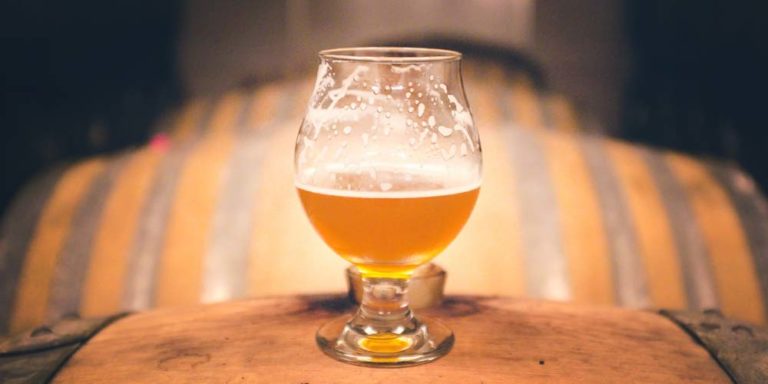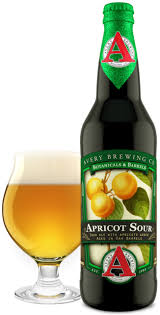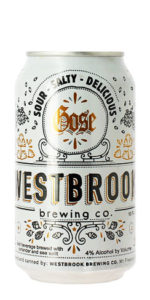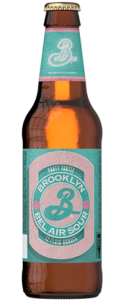
Sour beers are increasingly being embraced by craft beer consumers looking for tartness in all the right places.
But in spite of their growing popularity, sour beers are still a mystery to many, and we’ve some ‘wild’ factoids about sours that might help…
What the Hell is a Sour Beer?
Where traditional beers are the byproduct of sterile environments and very specific yeast strains, sour beers, which are actually the oldest type beers in history, came into being in a pre-pasteurization era when concepts like sterilization were poorly understood.
 The other thing that wasn’t understood in the early days of beer and brewing was yeast itself.
The other thing that wasn’t understood in the early days of beer and brewing was yeast itself.
As VinePair astutely points out it wasn’t until a famous French biologist, microbiologist and chemist’s arrival that the role of yeast in the fermentation process was seen for what it was…
“Beer—made with malt, hops, water, and yeast—wasn’t always defined as such. Yeast wasn’t even included in the original German Beer Purity Law.”
“It was only added after Louis Pasteur figured out that it was yeast doing the fermenting; prior to that, yeast had simply been unknowingly passed on from beer to beer when brewers would start a new batch from an old one, heroically doing all the work of fermenting with no credit.”
Early fermentation prior to Pasteur’s ground-breaking discovery was an ambient and almost occult process.
Back in the day, beers were stored in wooden barrels or open-air vessels known as cool ships while fermenting and subject to a host of microorganisms, wild yeast, and bacteria that tempered what they would become.
The practice couldn’t have been more wild, which is the reason that sour beers are also called wild ales.
And what is Brett?
The wild yeast used in sours is known as Brettanomyces, also known as “Brett.”
Unlike Saccharomyces cerevisiae (which is used to make ales and works at warmer temperatures) and Saccharomyces pastorianus (which works in cooler temperatures and used to make lagers), Brettanomyces has a reputation as a beer spoiler.
At its worst, Brett can add serious off-flavors and aromas. But encouraged and nurtured intentionally Brett can nuance the finest Saisons and bring a sour complexity to classic Belgian ales like the Oud Bruin or the Flanders Red. Brett is also largely responsible for the funk tones found in many sours.
The Magic of Mixed Fermentation
Sour beers are seldom the result of Brett alone, but also its interplay with bacteria and microflora…a process commonly called known as mixed fermentation.
Lactobacillus is prominent form of bacteria found in many mixed fermentation sours. Affectionately referred to as “lacto” by many brewers, Lactobacillus can add that pucker-producing lemony tartness that many associate with sour beers.
 Pediococcus (aka “pedio”) is another bacteria commonly found in modern sours. Pedio brings an even harsher tartness to the mix than does lacto, but that tartness comes with a funk characteristic that adds complexity. Pedio bacteria is widely used in lambics and Flanders reds.
Pediococcus (aka “pedio”) is another bacteria commonly found in modern sours. Pedio brings an even harsher tartness to the mix than does lacto, but that tartness comes with a funk characteristic that adds complexity. Pedio bacteria is widely used in lambics and Flanders reds.
Whew!
So that’s a lot to unpack…And no, there won’t be a quiz, but hopefully this helps explain a little about what makes sour beers so wild.
And if you’re not yet “soured” on the subject, there’s also this…
WALK ON THE WILD SIDE – 5 GREAT INTERNATIONAL SOUR BEERS
And this…
5 MORE AMAZING INTERNATIONAL SOUR BEERS
—
Major H/T to our friend Zach Mack at Thrillist and to Nick Hines at VinePair, both great writers whose previous work on the subject helped us immensely…
Banner image credit: Kegerator
 American Craft Beer The Best Craft Beer, Breweries, Bars, Brewpubs, Beer Stores, And Restaurants Serving Serious Beer.
American Craft Beer The Best Craft Beer, Breweries, Bars, Brewpubs, Beer Stores, And Restaurants Serving Serious Beer.
